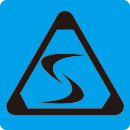

| solid CBN insert |
| thoroughly brazed |
| PCBN tipped insert |
| C (80° diamond) |
| D (55° diamond) |
| T (60° triangle) |
| V (35° diamond) |
| S (90° square) |
| W (80° hexagon) |
| Full face PCD insert |
| PCD tipped insert |
| C (80° diamond) |
| D (55° diamond) |
| T (60° triangle) |
| V (35° diamond) |
| W (80° hexagon) |
Home >> Technical FAQs >> composite material milling and chamfering with pcd inserts |
composite material milling and chamfering with pcd inserts |
Composite material milling is now one of the fastest growing areas of application for pcd diamond inserts. Materials like carbon fiber reinforced plastic (CFRP), green ceramic, fiberglass, Kelvar, stacked metal composites, and super alloys of aluminum and titanium, create unique challenges for precision machining. However, with the use of specially designed or standard polycrystalline diamond pcd inserts, and the careful assessment of the qualities of each composite material, it is possible to achieve high precision machining, with high quality surface finish. Here are some important points to note when choosing full faced milling inserts and tipped pcd inserts for machining and chamfering of composite materials. |
Features of Composite Materials that Affect Machining |
Some roughing milling operations may require the removal of a large amount of material at high rpm. During such operations, it is vital to guard against the occurrence of both splintering and delamination of the finished surface. In such cases the operator may have to make use of indexable inserts. This will prevent the cutting inserts from getting worn out due to the high level of abrasiveness exhibited by some composite materials. In addition, the pcd inserts used for milling should enhance the efficient removal of chips and provide excellent surface finish without any burrs. |
Standard PCD Inserts for Milling Composites |
The grades of these tools, designed with a wiper flat length ranging from 1.6 mm to 8 mm, provide good surface finish. The nose/corner angle at the cutting edge is 90 degrees for the square shaped insert while the diamond shaped inserts are offered in various angles including 80 and 55 degrees. For higher accuracy, the micro structure of the grains of the pcd inserts can be altered to suit the nature of the material to be machined. For instance, the 10 – 20 μm grade is suitable for milling aluminum with high silicon as well as fiberglass, and CFRP. But copper and hard rubber will have a better surface finish with the 20 – 50 μm grade. |
Conclusion |
| HOME | About us | PCD insert | PCBN insert | Site map | Contact us | Technical FAQ |
We export PCD inserts to world wide countries, such as USA united states, Germany, UK united kingdom, Italy, France, Turkey, Russia, Saudi Arabia, United Arab Emirates, Ukraine, Israel, Canada, South Africa, South Korea, Japan, Australia, New Zealand, Finland, Sweden, Norway, Danmark, Switzerland, Poland, Czech,Ireland, Holand, Belgium, Greece, Croatia, Spain, Portugal, Egypt, India, Philippines, Cambodia, Thailand, Malaysia, Singapore, Indonesia, Mexico, Brazil, Colombia, Chile, Argentina etc. |
| Contact: Richard | Tel: +0086-13929967797 | E-mail: sales@pcd-insert.com |